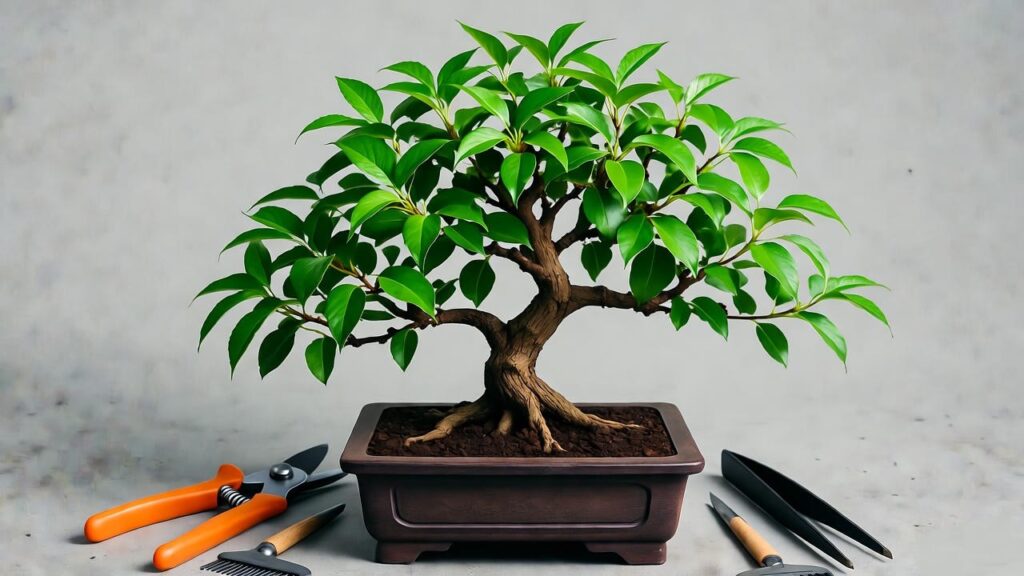Picture a tiny, majestic tree gracing your living room, its delicate branches swaying gently and its glossy leaves catching the light—a living work of art that brings nature’s serenity indoors. This is the allure of the Chinese Elm Bonsai, a beginner-friendly yet captivating plant that transforms any space into a haven of calm. Whether you’re new to bonsai or a seasoned enthusiast, mastering Chinese Elm Bonsai care can feel daunting without the right guidance. Fear not—this comprehensive guide offers expert-driven, actionable tips to ensure your bonsai thrives as a stunning indoor centerpiece. From watering to styling, we’ll cover everything you need to cultivate a healthy, vibrant Chinese Elm Bonsai that elevates your home and your plant-care skills.
Why Choose a Chinese Elm Bonsai?
Unique Features of the Chinese Elm Bonsai
The Chinese Elm Bonsai, scientifically known as Ulmus parvifolia, is a favorite among bonsai lovers for its striking aesthetic and forgiving nature. Its small, glossy, dark-green leaves create a lush canopy, while its naturally graceful branching lends itself to various bonsai styles, from informal upright to cascading designs. Unlike some finicky bonsai species, the Chinese Elm is semi-evergreen in milder climates and deciduous in cooler ones, offering year-round visual interest. Its textured bark, which develops a rugged charm with age, adds to its appeal as a miniature tree that mirrors the grandeur of nature.
This bonsai’s resilience makes it ideal for indoor environments. It adapts well to fluctuating conditions, forgiving occasional care missteps that might stress other species. Its cultural significance in bonsai art, rooted in East Asian traditions, also makes it a meaningful addition to any collection. Whether displayed on a windowsill or a dedicated bonsai stand, the Chinese Elm captivates with its timeless beauty.
Benefits of Growing a Chinese Elm Bonsai Indoors
Beyond its visual charm, the Chinese Elm Bonsai offers practical and emotional benefits. It serves as a natural focal point in home decor, complementing minimalist or traditional aesthetics. Caring for a bonsai fosters mindfulness, as the slow, deliberate process of pruning and shaping encourages patience and focus. Studies suggest that indoor plants like the Chinese Elm can improve air quality by filtering pollutants, though its primary draw is its low-maintenance care compared to other bonsai varieties. For busy plant parents, this makes it an accessible yet rewarding choice.
Understanding the Chinese Elm Bonsai
Botanical Background
The Chinese Elm (Ulmus parvifolia) is native to East Asia, including China, Japan, and Korea. In its natural habitat, it grows as a full-sized tree, reaching heights of 40–70 feet. As a bonsai, its compact size—typically 6–24 inches—makes it perfect for indoor settings. Its semi-evergreen nature means it may retain leaves year-round in warm climates or shed them seasonally in cooler ones, adapting to your home’s conditions. The tree’s small, serrated leaves and smooth-to-rugged bark give it a balanced, harmonious look prized in bonsai culture.
Ideal Indoor Conditions
To thrive, a Chinese Elm Bonsai needs bright, indirect light, moderate temperatures, and adequate humidity. Aim for 6–8 hours of filtered sunlight daily, such as near a south-facing window. Temperatures between 60–75°F (15–24°C) are ideal, with humidity levels of 40–60%. Many indoor environments naturally meet these conditions, but supplemental tools like grow lights or humidifiers can help. A common misconception is that bonsais are inherently difficult to maintain—while they require attention, the Chinese Elm’s adaptability makes it far more forgiving than most.
Essential Care Tips for a Thriving Chinese Elm Bonsai
Watering Your Chinese Elm Bonsai
Proper watering is the cornerstone of Chinese Elm Bonsai care. Overwatering is a leading cause of bonsai failure, so check the soil’s top inch before watering. If it feels dry, water thoroughly until excess drains from the pot’s bottom, ensuring the roots are evenly moist but not soggy. Use room-temperature water to avoid shocking the roots, and ensure your pot has drainage holes to prevent waterlogging. In summer, you may need to water every 2–3 days, while in winter, every 5–7 days suffices, depending on indoor humidity and temperature.
Light and Placement
Light is critical for photosynthesis and healthy growth. Place your Chinese Elm Bonsai near a window with bright, indirect light or use a full-spectrum grow light if natural light is limited. South- or east-facing windows are ideal, but avoid direct midday sun, which can scorch leaves. Rotate the bonsai every 1–2 weeks to ensure even light exposure, promoting balanced growth. If leaves appear pale or stretched, it’s a sign of insufficient light—adjust placement or supplement with artificial lighting.
Soil and Potting
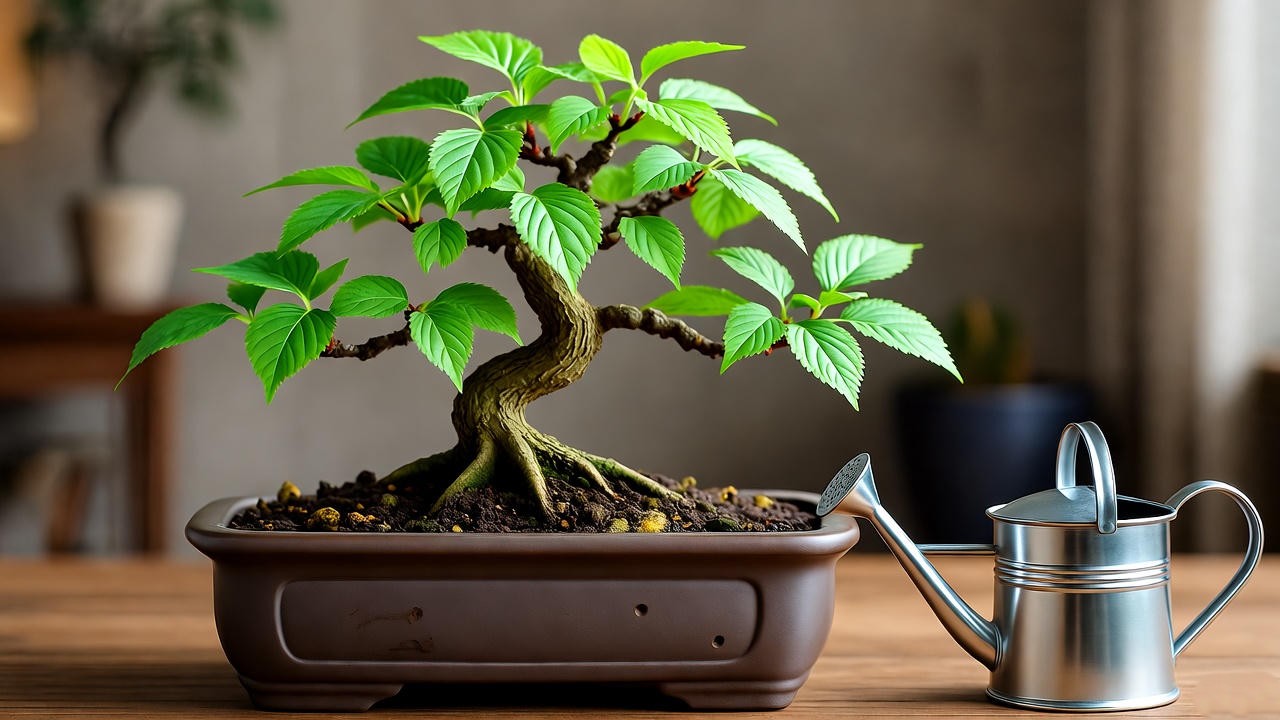
A well-draining soil mix is essential for root health. A standard bonsai mix of akadama, pumice, and lava rock (in a 2:1:1 ratio) works well, providing aeration and moisture retention. Repot young Chinese Elms every 1–2 years, ideally in early spring, to refresh the soil and trim overgrown roots. Mature trees may need repotting every 3–5 years. During repotting, gently remove old soil, trim one-third of the root mass, and place the tree in a slightly larger pot to encourage growth.
Step-by-Step Repotting:
- Gently remove the bonsai from its pot.
- Shake off excess soil and rinse roots to inspect for rot.
- Trim long or damaged roots with sterile scissors.
- Place fresh soil in the pot, position the tree, and fill with more soil.
- Water thoroughly and keep in a shaded spot for 1–2 weeks to recover.
Fertilizing for Optimal Growth
Fertilizing fuels your bonsai’s growth and vibrancy. Use a balanced, water-soluble fertilizer (e.g., 10-10-10 NPK) every two weeks during the growing season (spring and summer). In fall and winter, reduce to monthly applications as growth slows. Dilute fertilizer to half-strength to avoid burning the roots. Signs of over-fertilization include yellowing leaves or crusty soil, while under-fertilization may cause stunted growth or pale foliage. Always water before fertilizing to ensure even nutrient absorption.
Pruning and Shaping
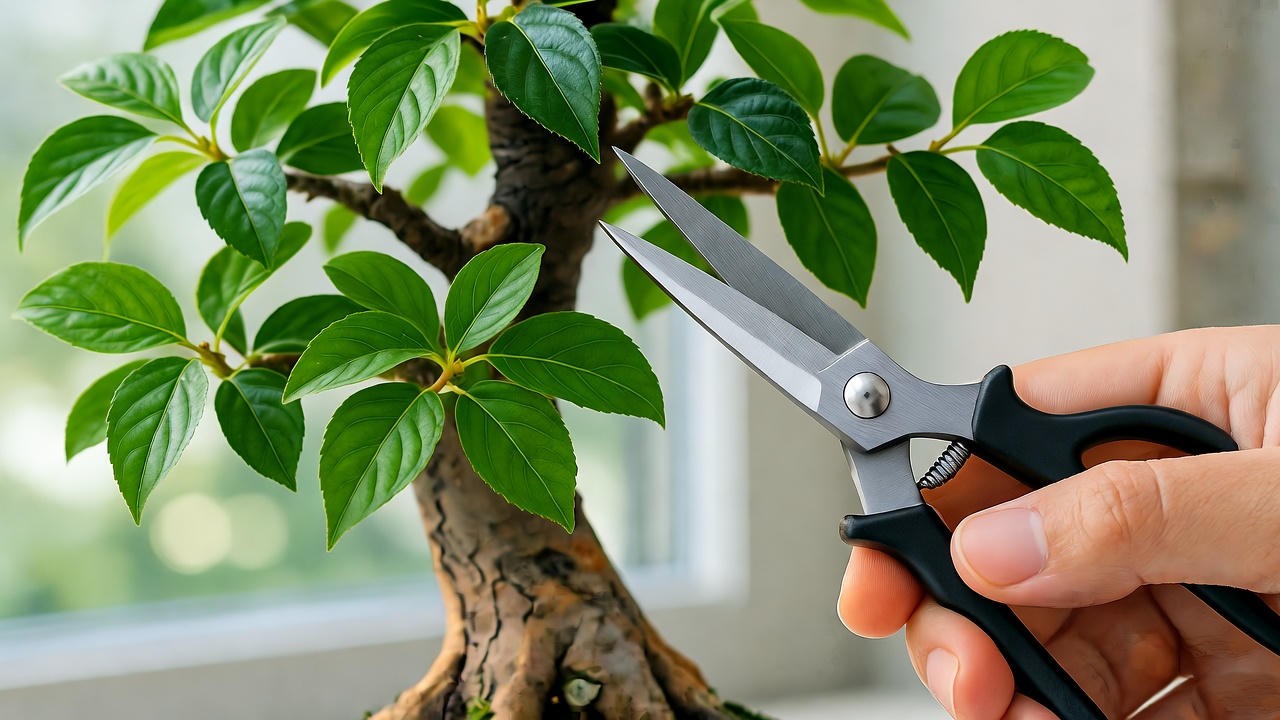
Pruning maintains your bonsai’s size and shape while promoting healthy growth. Maintenance pruning involves trimming new shoots to 2–3 leaves after they grow 6–8 leaves, typically in spring or summer. Structural pruning, done in late winter, removes larger branches to refine the tree’s form. Use sharp, sterile bonsai scissors to avoid damaging branches. For shaping, wiring is a key technique—wrap anodized aluminum wire around branches to guide their direction, but remove it after 1–2 months to prevent scarring.
Humidity and Temperature Control
Indoor environments can be dry, so maintain 40–60% humidity with a humidity tray filled with pebbles and water or a room humidifier. Misting is less effective, as it provides only temporary moisture. Keep your bonsai away from drafts, heaters, or air conditioners, which can cause leaf drop. If your home is particularly dry, consider grouping your bonsai with other plants to create a microclimate with higher humidity.
Common Problems and How to Solve Them
Pest and Disease Management
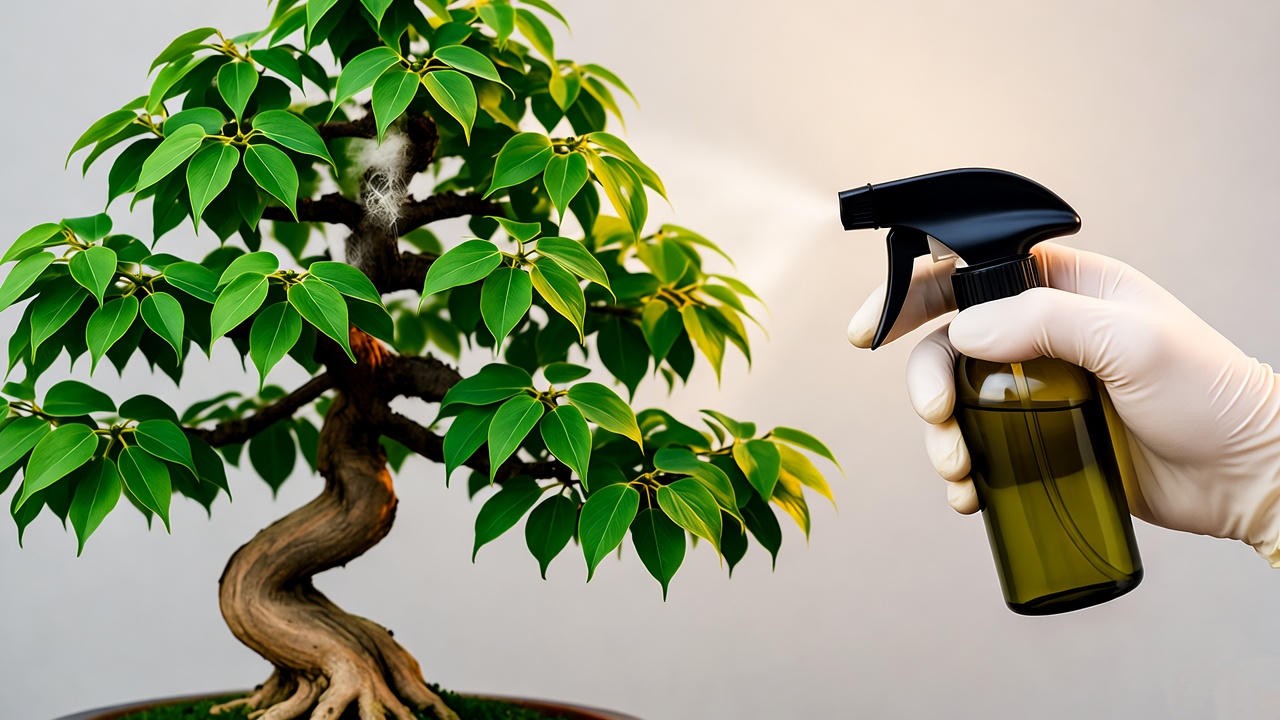
Chinese Elm Bonsais are hardy but not immune to pests like spider mites, aphids, or scale insects. Inspect leaves regularly for webbing, sticky residue, or small bugs. For minor infestations, wipe leaves with a damp cloth or use neem oil as an organic treatment. For severe cases, insecticidal soap or horticultural oil may be necessary, but follow label instructions carefully. Prevent pests by ensuring good airflow and avoiding overwatering, which can attract fungus gnats.
Troubleshooting Yellowing Leaves or Dropping
Yellowing or dropping leaves often signal care issues. Overwatering is the most common culprit—check for soggy soil and reduce watering frequency. Insufficient light can cause pale, weak growth, so move the bonsai to a brighter spot or add a grow light. Nutrient deficiencies may also cause yellowing; resume regular fertilization if you’ve skipped it. For example, I once revived a struggling Chinese Elm by adjusting its watering schedule and moving it closer to a window, restoring its vibrancy within weeks.
Dealing with Root Rot
Root rot, caused by excessive moisture, presents as mushy, dark roots and wilting leaves. If suspected, remove the bonsai from its pot, trim affected roots, and repot in fresh, well-draining soil. Ensure the pot has adequate drainage holes and avoid overwatering moving forward. To prevent recurrence, use a moisture meter and water only when the top inch of soil is dry.
Styling Your Chinese Elm Bonsai
Popular Bonsai Styles for Chinese Elm
The Chinese Elm Bonsai is a versatile canvas for bonsai artistry, lending itself to a variety of traditional styles. The informal upright style, with its slightly curved trunk and natural branching, is a popular choice for beginners, mimicking the tree’s natural growth. The slanting style, where the trunk leans dramatically to one side, adds dynamic energy to the design. For a more compact look, the broom style features a straight trunk with a dense, rounded canopy. Advanced growers may experiment with the cascade style, where branches drape below the pot, evoking a tree clinging to a cliff. The Chinese Elm’s flexible branches and small leaves make it ideal for these styles, allowing you to craft a miniature masterpiece that reflects your creative vision.
Wiring and Shaping Techniques
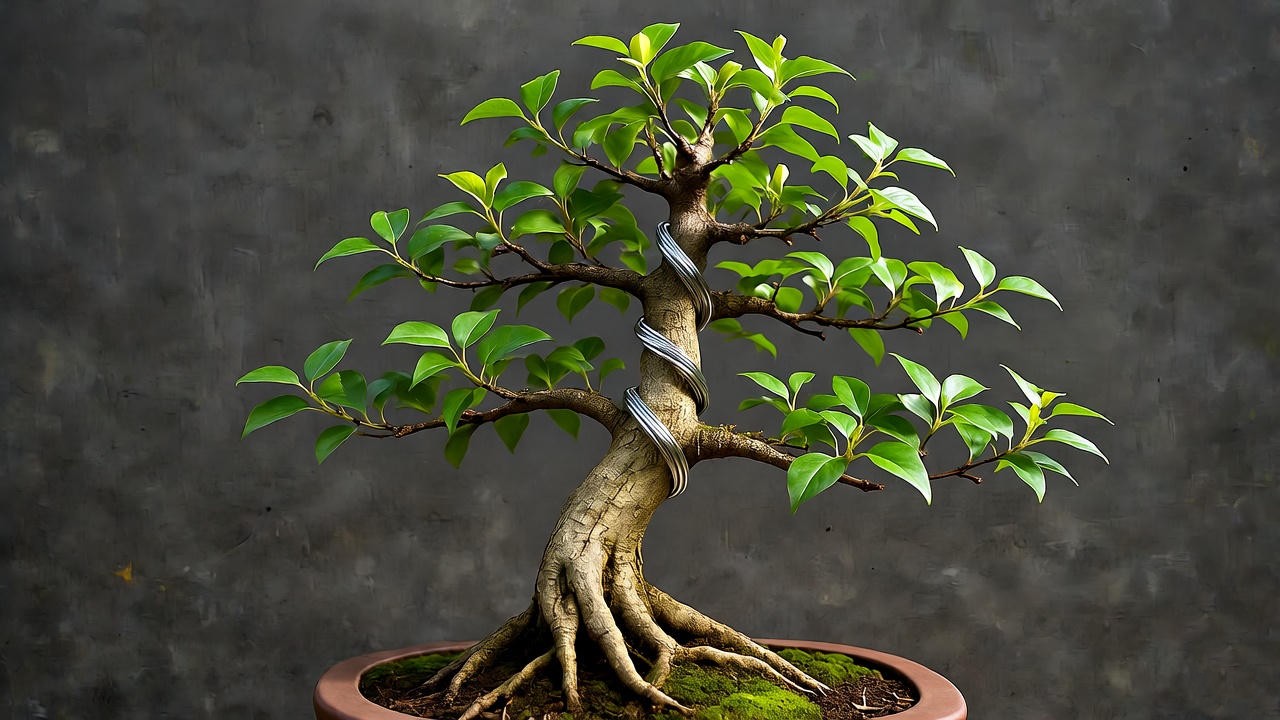
Wiring is a cornerstone of bonsai shaping, allowing you to guide branches into desired positions. Use anodized aluminum wire (1–4 mm thick, depending on branch size) and wrap it at a 45-degree angle around the branch, starting from the base. Gently bend the branch to create curves or angles, but avoid sharp bends that could snap it. Wire in spring or early summer when branches are more pliable. Check wired branches weekly and remove the wire after 1–2 months to prevent it from cutting into the bark as the branch grows.
Step-by-Step Wiring:
- Select a branch and choose wire one-third its thickness.
- Anchor the wire at the trunk or a thicker branch, then wrap evenly.
- Bend the branch gradually, supporting it to avoid cracking.
- Monitor for signs of wire bite and remove promptly.
Creating a Miniature Landscape
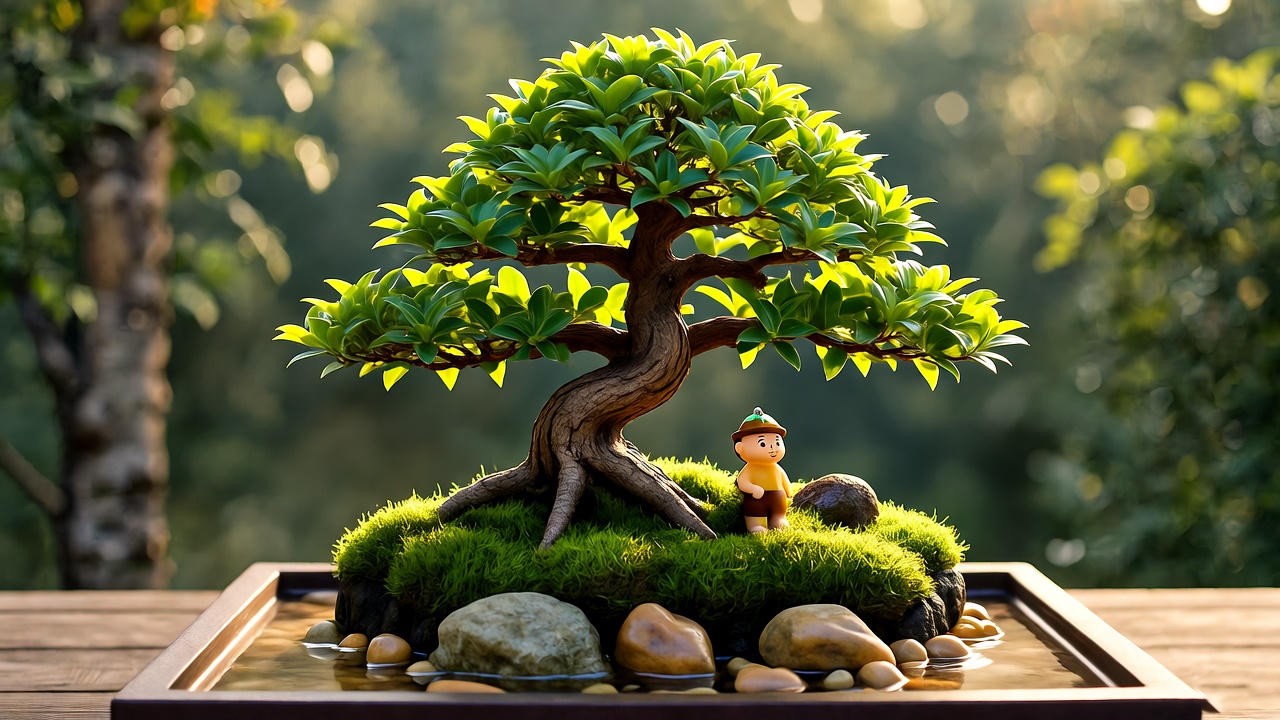
Elevate your Chinese Elm Bonsai’s display by creating a miniature landscape. Add a layer of green moss to the soil surface for a natural, forest-like effect, ensuring it doesn’t trap excess moisture. Small rocks or pebbles can mimic a rocky terrain, while tiny figurines (e.g., a miniature bench or lantern) add whimsical charm. For seasonal flair, incorporate autumn-colored moss or small pinecones in fall. Always prioritize the tree’s health—ensure any additions don’t block drainage or airflow.
Advanced Care Tips for Experienced Bonsai Growers
Refining Branch Structure
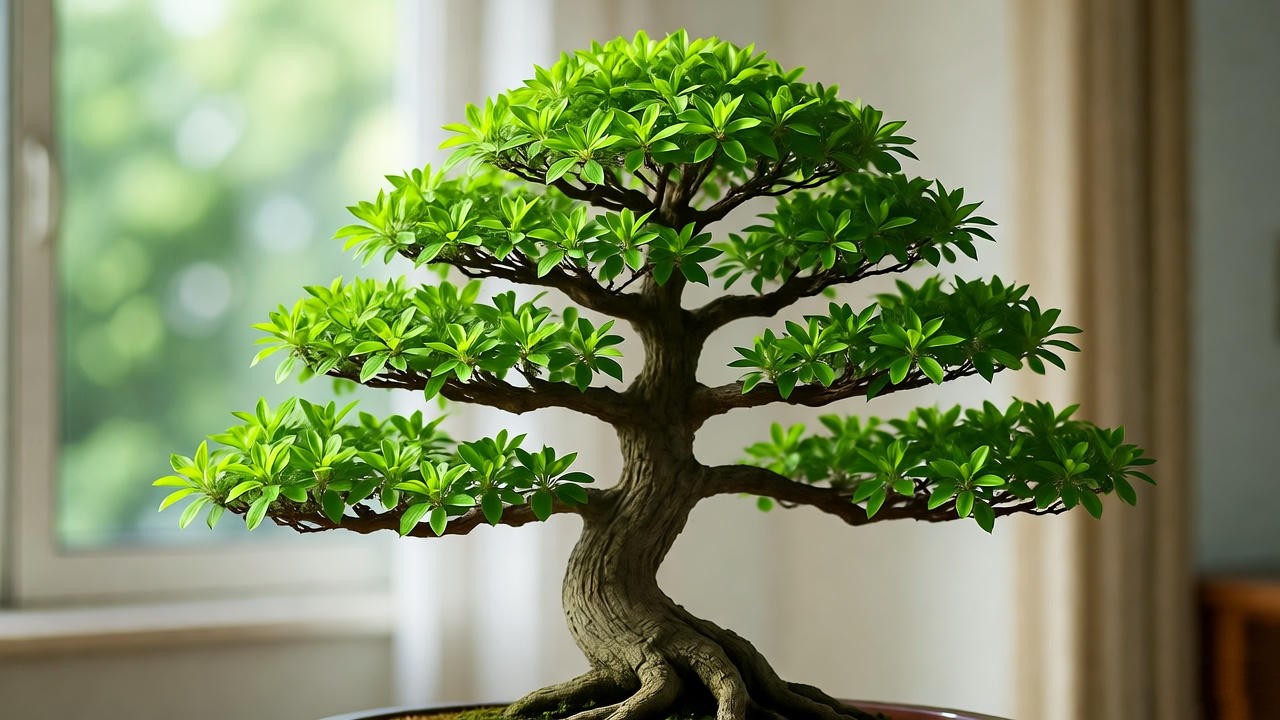
For seasoned bonsai enthusiasts, refining branch structure is key to elevating your Chinese Elm from ordinary to extraordinary. Focus on ramification, the process of encouraging fine, dense branching to create a fuller canopy. Prune back new shoots regularly to promote secondary and tertiary branches, creating a layered, natural look. Thin out overly dense areas to improve light penetration and airflow, reducing the risk of fungal issues. A well-ramified Chinese Elm Bonsai can take years to perfect, but the result is a tree that looks aged and refined.
Seasonal Care Adjustments
The Chinese Elm Bonsai’s needs shift with the seasons, especially indoors. In winter, when growth slows, reduce watering and fertilization, and protect the tree from cold drafts near windows. If your bonsai sheds leaves (common in cooler climates), place it in a slightly cooler spot (55–65°F) to mimic dormancy. In spring, ramp up watering and fertilization as new buds appear, and consider repotting if roots are crowded. Summer requires vigilant monitoring for pests and increased humidity, while fall is ideal for light pruning to prepare for dormancy.
Propagating Chinese Elm Bonsai
Propagating your Chinese Elm allows you to expand your collection or share with others. Cuttings are the most reliable method: in spring, take 4–6-inch cuttings from healthy shoots, remove lower leaves, and plant in a moist, well-draining mix. Keep in a shaded, humid spot until roots form (4–8 weeks). Air layering is ideal for thicker branches—make a ring cut around a branch, wrap with sphagnum moss, and seal in plastic until roots develop. Seeds are less common due to slow growth but can be sown in spring for long-term projects.
Pros and Cons:
- Cuttings: Fast, reliable, but limited to new growth.
- Air Layering: Produces thicker trunks, but requires patience.
- Seeds: Offers unique trees, but takes years to mature.
FAQs About Chinese Elm Bonsai Care
How often should I water my Chinese Elm Bonsai?
Water when the top inch of soil feels dry, typically every 2–3 days in summer and 5–7 days in winter. Use a moisture meter for accuracy and ensure proper drainage to avoid root rot.
Can a Chinese Elm Bonsai survive in low light?
It prefers bright, indirect light but can tolerate lower light with a full-spectrum grow light. Insufficient light leads to weak growth, so supplement if needed.
Why is my bonsai dropping leaves?
Leaf drop may result from overwatering, low light, or sudden temperature changes. Diagnose by checking soil moisture, light exposure, and recent care changes, then adjust accordingly.
How long does a Chinese Elm Bonsai live?
With proper care, it can live for decades, even a century. Regular pruning, repotting, and pest management are key to longevity.
Is the Chinese Elm Bonsai safe for pets?
The Chinese Elm is non-toxic to cats and dogs, but keep it out of reach to prevent accidental damage to the tree or ingestion of soil.
Conclusion
The Chinese Elm Bonsai is more than a plant—it’s a journey of patience, creativity, and connection to nature. With its forgiving nature and stunning aesthetic, it’s an ideal choice for both novice and experienced growers. By following the care tips in this guide—watering wisely, providing ample light, pruning thoughtfully, and styling with care—you’ll cultivate a thriving Chinese Elm Bonsai that becomes a stunning indoor centerpiece. Start your bonsai journey today, and share your progress with our community of plant lovers! For more indoor plant inspiration, check out our guides on “Top 10 Indoor Bonsai Trees” or “Essential Bonsai Tools for Beginners.”

